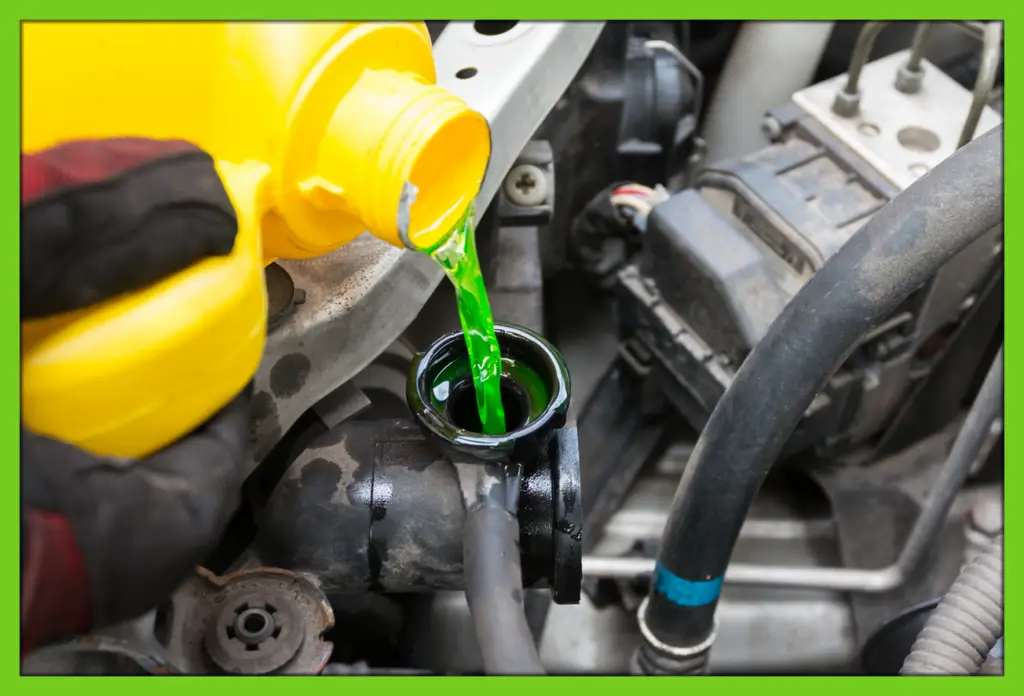OAT vs. HOAT Coolant

OAT vs. HOAT coolant, understanding the differences between them is essential for maintaining your vehicle’s cooling system. While both coolants provide effective protection against corrosion and other issues, their specific properties, service life, and compatibility vary. Always consult your vehicle’s owner’s manual or a trusted mechanic to determine the correct coolant type for your vehicle. Never mix coolants, as this can lead to significant issues.
Our TNT Customs Mechanics are certified and can help you with your coolant needs.

A Cautionary Tale: The Perils of Mixing Coolants
Here’s where our story takes a turn. A Jeeper traveling across the country rolled into our shop with coolant issues. After initial diagnosis the Jeep was a casualty of mixed coolants – now a thick, gelatinous mess incapable of cooling anything. This tale shares a critical lesson: mixing OAT and HOAT coolants can lead to overheating, corrosion, and significant damage over time. If such a mix-up occurs, a comprehensive cooling system flush is the only remedy to restore function and protect your engine. We fixed up the Jeep and she was on her way. This an unnecessary pit stop on her journey because of mixed coolants.
What Happens When You Mix OAT & HOAT Coolants?
You won’t see an instant dramatic event when you mix the two types of coolants. However, you will have contaminated your cooling system. That means the cooling liquid concoction that was accidentally created will not properly cool the engine as designed. This can lead to overheating, corrosion and even water pump impeller damage as time passes. In extreme cases, the coolant mix can even turn into a thick gel that is useless for cooling an engine.
If coolant does get mixed together, the proper solution is a cooling system flush. Draining the entire cooling system and refiling with the proper coolant type will guarantee your cooling system will do its job properly for a long time. Flushing your cooling system doesn’t take long and gives you peace of mind knowing that your coolant is fresh and ready for extreme temperatures.
What is OAT Coolant?
At its core, OAT, Organic Acid Technology coolant represents a modern approach to engine temperature regulation and corrosion prevention. Utilizing organic acids known as carboxylates, OAT coolant sidesteps older coolant components like silicates and phosphates. This offers your vehicle a cleaner, more environmentally and efficient way to stay cool under pressure. This innovation translates to potentially over 100,000 miles of service life, marking a significant leap forward in coolant technology. OAT coolants are typically used in newer vehicles.
What is HOAT Coolant?
Hybrid Organic Acid Technology (HOAT) coolant is a blend of both OAT and traditional Inorganic Technology, combining the benefits of both types of coolants. HOAT coolants contain silicates and phosphates along with organic additives, providing a versatile spectrum of protection against corrosion and other issues. HOAT coolants are recommended for a variety of vehicle makes and model.
Decoding the Rainbow: Understanding Coolant Colors
While the most recognizable shade of OAT coolant might be orange, the palette available to today’s drivers includes a variety of hues – from MOPAR’s proprietary purple to shades of pink, red, and even dark green. However, color alone doesn’t guarantee compatibility. Always consult your vehicle’s manual and the coolant bottle’s specifications to ensure a perfect match and avoid mixing incompatible coolants.
OAT Color: OAT coolant is typically orange, but that’s not always the case. The palette available to today’s drivers includes a variety of hues – from MOPAR’s proprietary purple to shades of pink, red, and even dark green. However, color alone doesn’t guarantee compatibility.
HOAT Color: HOAT coolant can be yellow, purple, blue, pink, or turquoise.
Corrosion Protection: Both OAT and HOAT coolants provide effective protection against corrosion, but the specific types of metals and materials they protect may vary.
Service Life: OAT coolants are known for their extended service life, with some lasting up to 150,000 miles or 10 years. HOAT coolants may require more frequent replacements, depending on the manufacturer’s recommendations.
Compatibility: It is crucial not to mix OAT and HOAT coolants, as this can lead to issues such as gelling and reduced cooling system performance.
Oat vs Hoat Coolant Safety Tips
- Never attempt to add coolant to a hot engine.
- NEVER open a radiator cap or coolant overflow bottle while the engine is hot.
- Let your vehicle cool.
- Use a funnel to prevent any spillage and fill the coolant bottle until it reaches the “Full” level mark.
- Monitor coolant levels after several drives to adjust for any air bubble displacement.
Make absolutely sure you know what kind of coolant is in your engine before adding any other coolant. Don’t always count what you believe the color to be. Ideally, your engine is already filled with the type of coolant specified in your owner’s manual. If there is ever any doubt as to whether you accidentally mixing coolant types, it is worth your time to do a cooling system flush.
